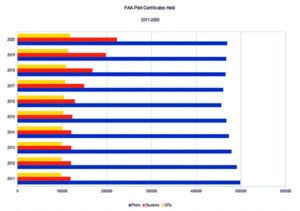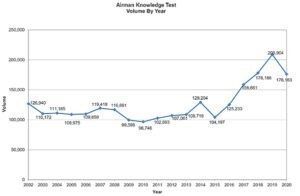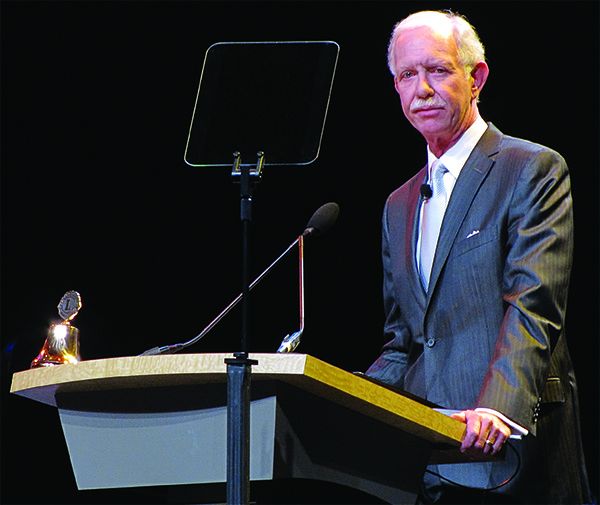Separate bills passed by the U.S. House of Representatives in mid-June were developed to help improve the Notice to Airmen (Notam) system and allow incentive payments for early completion of airport projects. The legislation, H.R. 1262, the Notice to Airman Improvement Act of 2021, introduced by U.S. Rep. Pete Stauber (R-Minn.) and cosponsored by U.S. Rep. Mark DeSaulnier (D-Calif.), and H.R. 468, the Expedited Delivery of Airport Infrastructure Act of 2021, sponsored by U.S. Reps. Sam Graves (R-Mo.) and Garret Graves (R-La.) passed the House the same day on noncontroversial, bipartisan voice votes. They now are before the U.S. Senate.
Rep. Stauber’s Notice to Airman Improvement Act of 2021 is the latest Congressional attempt to address the dissemination of critical aeronautical information updates. “Modern aviation is incredibly safe, but in order to keep it that way, we must constantly work to improve upon safety protocols,” Stauber said in a news release. “That’s why I am proud to lead legislation that will help iron-out the kinks in the NOTAM system and make both commercial and general aviation even safer than it already is.”
President Biden on June 15 nominated retired US Airways Captain Chesley B. “Sully” Sullenberger III to serve as U.S. ambassador to the Council of the International Civil Aviation Organization (ICAO). Sullenberger was captain of an Airbus A320 that suffered a dual flameout when it encountered a flock of birds on January 15, 2009, shortly after taking off from New York’s LaGuardia Airport.
The resulting ditching of the Airbus into the Hudson River became known as the “Miracle on the Hudson.” He and First Officer Jeff Skiles, as well as the flight’s cabin crew, were instrumental in the survival of all 155 aboard.
Aviation organizations were quick to laud the decision. “I can think of no one better to represent U.S. aviation interests at ICAO than Capt. Sullenberger,” said NBAA President and CEO Ed Bolen. “We all know his heroism, and he has been an ardent safety advocate and aviation expert for his entire 50-year flying career. He is also a champion for our industry, repeatedly speaking out for business aviation in public. NBAA strongly supports his ambassadorship.”
“Improving long overdue changes to these safety-of-flight notifications will be very welcomed by pilots,” AOPA Senior Vice President of Government Affairs Jim Coon said in commenting on the Notams bill.
The Graves’ bill, meanwhile, has a relatively simple purpose: allow FAA Airport Improvement Program funds derived from airline ticket and aviation fuel taxes to be used to make incentive payments to contractors who meet contract specifications for early project completions.
“This is a smart reform that can help deliver airport projects ahead of schedule, relieve operational disruptions at airports caused by unfinished projects, and save money,” said Rep. Sam Graves (R-Mo.), the bill’s lead sponsor, in a news release. “Getting projects done sooner rather than later can essentially provide a similar impact as increasing investment without requiring any additional federal resources,” he added.

One of the metrics the aviation industry watches closely is the number of student pilots entering the training pipeline (student starts) and the overall number of rated pilots. These statistics are published each year by the FAA, and were recently updated. The results are interesting, especially if you may have been led to believe the number of pilots is constantly declining. In fact, according to the agency’s data, the numbers of students, private pilots and higher, and flight instructors has been slowly creeping upward over the last five years. The bar chart at right tells the tale, and shows that small but consistent annual increases in the number of active flight instructors from 2011 (97,409) through 2020 (117,558) have occurred.

Meanwhile, other data from the FAA show a sharp decline in knowledge (written) tests taken during 2020. The chart at bottom right details a steady rise beginning in 2016 but, perhaps unsurprisingly, a steep dropoff last year. Still, the number of writtens taken in 2020 was on par with 2018.
Not shown in either graphic is the fluctuating number of active instrument-rated pilots. In 2011, according to the FAA, there were 314,122 instrument-rated pilots, but that number dipped to 302,572 in 2016. At the end of 2020, that statistic had rebounded to 316,651, only slightly higher than 2011.
REAL-TIME SUA NOTIFICATIONS IN THE WORKS
Determining and verifying the status of special-use airspace (SUA)—the military operations and restricted areas, among others, that seemingly always are between you and your destination—will become easier if the provisions in the 2021 defense authorization bill are fully implemented, according to AOPA. Thanks to Sen. James Inhofe (R-Okla.) and Rep. Sam Graves (R-Mo.), the act included a provision that requires the FAA and the Department of Defense to establish an automated real-time broadcast of the airspace status, likely via ADS-B In.
The FY2021 National Defense Authorization Act, became law on January 1, 2021, and requires the deployment of “automated public dissemination of information on the real-time status of the activation or deactivation of military operations areas and restricted areas in a manner that is similar to the manner that temporary flight restrictions are published and disseminated.” The legislation stated the deployment “shall” occur, “to the maximum extent practicable,” “not later than 180 days after enactment.” That deadline wasn’t met. Anticipating the schedule slippage, general aviation’s alphabet soup, along with ForeFlight, Garmin and others, wrote the Secretaries of Defense and Transportation in May, requesting to be involved in the associated planning and implementation discussions.
The groups noted that “a MITRE Corporation study suggests that implementing such a system could save $100 million annually in fuel burn, resulting in not only significant financial savings for airline, military, and general aviation operations, but would also help our environment by considerably reducing carbon emissions.”
“While the FAA and DOD are in discussions on how best to accomplish the real-time notifications that are required by law, the aviation industry has the needed technological skills and experience to help bring this to fruition,” said Jim Coon, AOPA senior vice president of government affairs and advocacy. “We look forward to joining our industry partners at the table in fulfilling this important advancement for aviation and for pilots.”
According to AOPA, “Real-time notifications will also deliver safety benefits as some large SUA complexes cannot be avoided when accessing underlying airports. Military training and restricted areas comprise nearly one-fifth of the airspace within the continental U.S. national airspace system. Real-time notifications will not negatively impact military training activities.”




